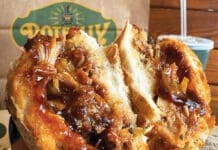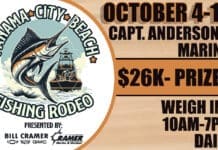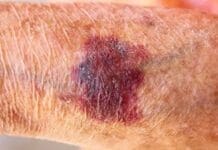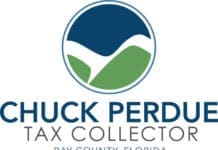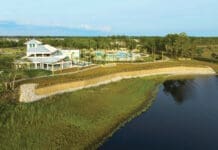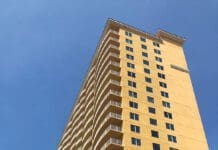 By Julie McConnell, UF/IFAS Extension
By Julie McConnell, UF/IFAS Extension
In 2020, a homeowner in Santa Rosa County noticed unusual insect activity on a crapemyrtle in the landscape. The following summer the property owner again observed the insects and reached out to the local UF/IFAS Extension Office for advice. The Santa Rosa Extension Agent collected and submitted samples to Florida Department of Agriculture and Consumer Services (FDACS) Department of Plant Industry which identified the pest as Acanthococcus lagerstroemiae Crapemyrtle Bark Scale (CBMS). This invasive insect was first identified in the United States in Texas in 2004, but this was the first documented case of crapemyrtle bark scale in Florida.
Why should this concern home gardeners? Crapemyrtles are summer flowering trees and shrubs that are widely planted in the Southeastern United States. They are available in many colors and mature sizes; once established they are drought and wind tolerant and are generally very low maintenance. The annual value of crapemyrtle production and sales exceeds $60 million according to the 2017 USDA Census of Horticultural Specialties. This attests to its popularity as a landscape plant and the economic impact this plant has within the green industry. Crapemyrtle bark scale has been documented on American Beautyberry (Callicarpa americana) which is native to Florida and the Southeastern U.S. It has the potential to affect other crops such as soybean, apples, persimmon, and pomegranate.
What should you look for?
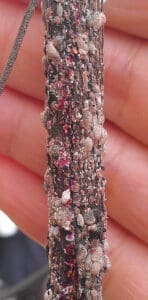 Usually, the first sign that there is a problem is the appearance of a black substance on stems, bark, or foliage. This is a fungal complex called sooty mold that grows on a sugary substance excreted by sap feeding insects called honeydew. If you see sooty mold should look for the insect responsible. On crapemyrtles the most likely culprit is the crapemyrtle aphid which feeds on tender new leaves and stems. Aphids are translucent soft bodied insects that reflect the color of their food source, usually green on crapemyrtles. If aphids are not present inspect the bark and branches for small gray/brown insects soft bodied insects with a white waxy substance surrounding it that ooze pink if crushed, this could be crapemyrtle bark scale. The scale feed on woody tissue and may be found near pruning scars, branch angles, or on the main trunk.
Usually, the first sign that there is a problem is the appearance of a black substance on stems, bark, or foliage. This is a fungal complex called sooty mold that grows on a sugary substance excreted by sap feeding insects called honeydew. If you see sooty mold should look for the insect responsible. On crapemyrtles the most likely culprit is the crapemyrtle aphid which feeds on tender new leaves and stems. Aphids are translucent soft bodied insects that reflect the color of their food source, usually green on crapemyrtles. If aphids are not present inspect the bark and branches for small gray/brown insects soft bodied insects with a white waxy substance surrounding it that ooze pink if crushed, this could be crapemyrtle bark scale. The scale feed on woody tissue and may be found near pruning scars, branch angles, or on the main trunk.
Because of the economic importance of crapemyrtle bark scale it is a regulatory pest and must be properly identified and documented by FDACS Department of Plant Industry (DPI). If you suspect the presence of crapemyrtle bark scale please contact the DPI Helpline at dpihelpline@fdacs.gov or 1 (888) 397-1517 or your local extension office.
For more information visit https://www.fdacs.gov/content/download/98126/file/PESTALERT-Crapemyrtlebarkscale01954.pdf
An Equal Opportunity Institution. UF/IFAS Extension, University of Florida, Institute of Food and Agricultural Sciences, Andra Johnson, Dean. Single copies of UF/IFAS Extension publications (excluding 4-H and youth publications) are available free to Florida residents from county UF/IFAS Extension offices.









